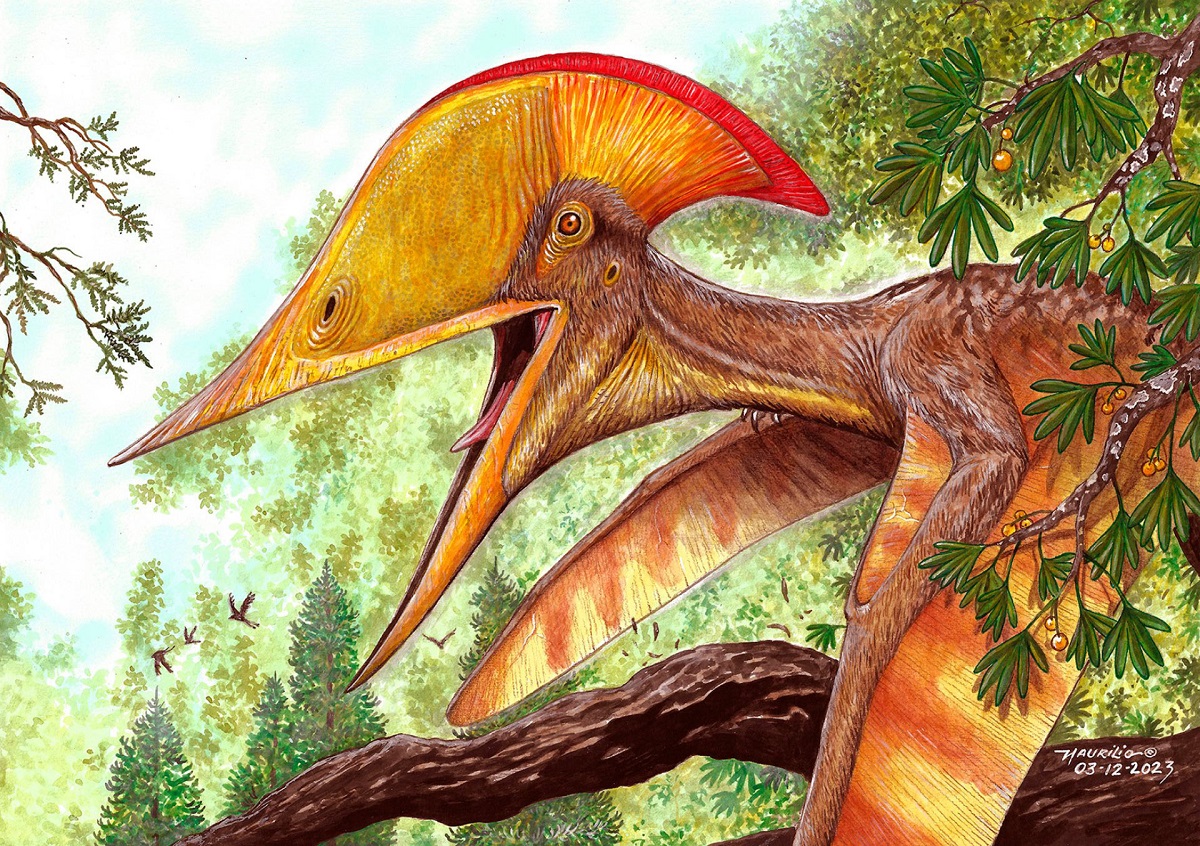A team of Chinese and Brazilian scientists unearthed a new pterosaur species, with one specimen being the best-preserved ever found.
The new pterosaur species lived in what is now China during the Early Cretaceous epoch, between 125 and 113 million years ago.
The flying reptile belongs to Chaoyangopteridae, a family of medium-sized and high-crested pterosaurs mostly known from Asia.
Dubbed Meilifeilong youhao, the species was part of the Jehol Biota, a terrestrial and freshwater ecosystem preserved in a multi-layered rock formation in northeastern China.
“Pterosaurs comprise an important and enigmatic group of Mesozoic flying reptiles that first evolved active flight among vertebrates, and have filled all aerial environmental niches for almost 160 million years,” said Dr. Xiaolin Wang from the Institute of Vertebrate Paleontology and Paleoanthropology at the Chinese Academy of Sciences and colleagues.
“Despite being a totally extinct group, they have achieved a wide diversity of forms in a window of time spanning from the Late Triassic to the end of the Cretaceous period.”
“Notwithstanding being found on every continent, China stands out by furnishing several new specimens that revealed not only different species, but also entire new clades, such as the azhdarchoid Chaoyangopteridae.”
“This Cretaceous group of medium-sized and high-crested pterosaurs is particularly well known in the Jehol Biota, which includes Chaoyangopterus zhangi and Shenzhoupterus chaoyangensis (at the time of description the only preserved posterior region of a skull of a chaoyangopterid, which made clear that those toothless pterosaurs formed a new clade).

The fossilized remains of two individuals of Meilifeilong youhao were found in the Jiufotang Formation at Huludao City in the Chinese province of Liaoning.
“The holotype is particularly well preserved and represents an individual that had a maximized wingspan of about 2.16 m (7.1 feet),” the paleontologists said.
“It consists of essentially all bones, except for most of the tail, making it the most complete and well-preserved skeleton of a chaoyangopterid recovered so far.”
“The referred specimen is composed solely by the premaxillae-maxillae and the anterior portion of the palatines and represents a smaller individual.”
The size of Meilifeilong youhao is basically the same as Meilifeilong sanyainus (wingspan of 2.18 m, or 7.2 feet) and, along with other features suggests that they represent distinct species of the same genus.
“This new species provides several novel information regarding these rather enigmatic flying reptiles, including data on the palatal region,” the researchers said.
“Furthermore, it shows the stapes preserved in place, which is a rare occurrence within pterosaurs.”
Sources:
Published December 21, 2023 in the journal Scientific Reports; A new toothless pterosaur from the Early Cretaceous Jehol Biota with comments on the Chaoyangopteridae.
doi: 10.1038/s41598-023-48076-7
Discover:

Vertebrate Evolution: From Origins to Dinosaurs and Beyond
$56.49 (50% off)
“A must have for anyone with an interest in vertebrate evolution!” The Bird Booker Report, May 2022

